Table of Contents
- What is School Readiness?
- School Readiness and Libraries
- The Domains of School Readiness
- Reimagining School Readiness
- Other things to keep in mind
What is School Readiness?
From the moment a child is born, they begin to learn. Early interactions between infants and caregivers at home and in the community provide opportunities to engage in back and forth conversations that impact a child’s language development. They are curious, exploring the world through their senses. By providing care, adults help establish a foundation for a child’s positive social-emotional development. These early experiences are the beginning of what is commonly known as school readiness.
To learn more about the importance of early relationships, check out these resources:
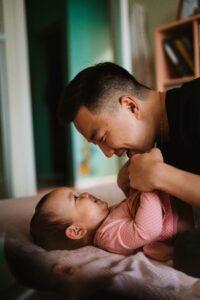
Lena.org
A national nonprofit on a mission to transform children’s futures through early talk technology and data-driven programs.
Fred Rogers Center
Aspiring to help children grow on the inside, learn through relationships, and give meaning to technology.
Center on the Developing Child Harvard University
Our mission is to drive science-based innovation that achieves breakthrough outcomes for children facing adversity.
Mind in the Making
A program of the Bezos Family Foundation that curates the science of children’s brain development and learning. They have developed 7 Essential Life Skills, learning modules, and curated book lists.
School Readiness and Libraries
Libraries are in a unique position to support school readiness. Not only can we complement formal in-school academic learning, but we can help cultivate positive relationships between children and their caregivers. Through intentional planning we can create programs and resources that support the five primary areas of school readiness: cognition and general knowledge, physical well being and motor development, approaches to learning, language and literacy, and social-emotional development. By providing events, programs, and spaces infused with informal learning experiences and developmental opportunities we can help set children up for success. In addition, we are modeling for caregivers examples of engaging experiences they can recreate and expand upon outside of the library, and connect caregivers with the resources they need.

Storytimes
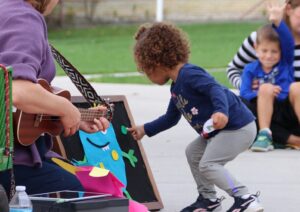
Being a core service of public libraries, storytimes are a natural place to intentionally plan with school readiness in mind.
- Choose books that support early literacy skills and enhance language development.
- Include movement activities like stretches or fingerplays to support physical development.
- Support early math development through counting songs, books, and flannel boards.
- Read non-fiction books to inspire an interest in science and strengthen children’s general knowledge.
- Talk about emotions and instill building blocks for a growth mindset, which supports social-emotional development.
- Practice executive function skills by using songs that give directions, asking children to wait their turn, or playing games like Simon Says to support their approaches to learning.
Check out our implementation guides under “5 Domains of School Readiness” for more ideas storytime facilitators can use to strengthen school readiness in their programs.
Music and Movement programs
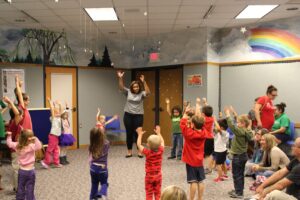
Music and movement events like preschool dance parties work to support positive physical well-being and motor skills, but can also include cross-domain content.
- Movement songs that identify parts of the body or repeat patterns of movement like Head, Shoulders, Knees, and Toes support cognition and physical well-being.
- Movement rhymes like Shake Your Legs and Stop or Freeze Dance, which, by asking children to follow directions and stop moving, help them with the process of self-regulation that strengthens approaches to learning.
- Songs like “If You’re Happy and You Know It” support social-emotional development activities.
- Crossing the midline is an important gross motor skill used in reading and writing. Crossing the midline refers to an imaginary vertical line down the middle of your body. When you reach with your right hand to the left side of your body, you have “crossed” the midline. Songs like “The Wheels on the Bus” or dance moves that ask children to reach across their body practice this motor skill.
Here are some other ideas for songs for music and movement programs that support school readiness domains.
Apart from preschool dance parties, there are other ways libraries support school readiness through programs that focus on music and/or movement.
- Working with community partners like KindermusikⓇ or offering your own classes that incorporate musical instruments you can provide programs that strengthen several domains including cognition and general knowledge.
- Yoga-inspired programs, such as those offered by Stories, Songs and StretchesⓇ support several school readiness domains.
- Sidewalk-chalk obstacle courses and sensory paths have become popular across the nation both outdoors and in locations as creative as laundromats.
- StoryWalkⓇ events enhanced with prompts that encourage movement and conversation are popping up in parks, and encouraging families to enjoy time together outdoors while reading and moving.
STEAM programming
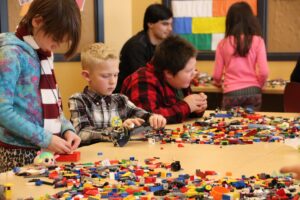
Stand-alone STEAM (science, technology, engineering, arts, and math) programs support school readiness in a variety of ways beyond building cognitive skills. There are activities that can support physical wellbeing, social-emotional development, and even language and literacy within these types of programs. STEAM can also be incorporated into your storytimes.
- Support scientific inquiry in programs rather than just scientific knowledge. Allowing children to explore, ask questions, and make their own discoveries has a positive effect on their approaches to learning. Try using these conversation starters when working with children, or empower caregivers by posting them in your spaces for their reference.
- Choose projects or experiments that focus on the process rather than the product. Finger painting, marble painting, sculpting with clay, experimenting with material properties (ice melting, baking soda + vinegar) are all ways we can encourage and build creative thinking, problem solving and critical thinking skills.
- It might not seem intuitive, but even infants and toddlers engage in learning math. In fact, a child’s early math skills are a strong predictor for later success in reading and math! Early math is more than counting. Try activities that incorporate measurement, shapes (geometry), and sorting.
- Look for projects that have kids cross the midline. Dipping toy car wheels in paint and driving them across a large piece of paper encourages the trunk (middle part of your body) rotation needed to cross the midline. Scribbling with crayons in both hands is another idea that supports positive physical development.
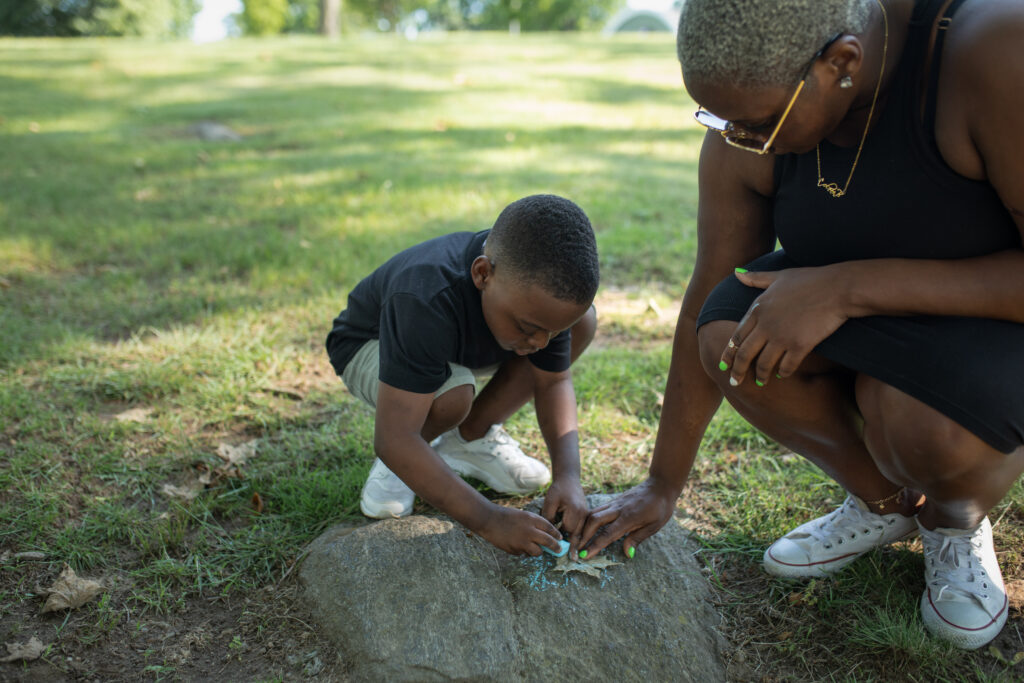
Additional STEAM Resources:
The blog Library Makers from Madison Public Library (WI) has many ideas for STEAM programming that emphasizes rich learning and school readiness experiences.
The Bay Area Discovery Museum’s Reimagining School Readiness Activities page also has many ideas to promote early science and math.
The Erikson Institute’s Early Math Collaborative offers information and ideas for incorporating math concepts into events and programs for young children.
Your Library Space
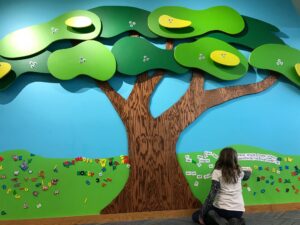
You might also consider your Library space itself as an opportunity to support school readiness. You can empower caregivers by designing activity centers that tie directly to school readiness and providing inspiration for things families can do at home. Viewing your library space as a “programming space,” and including interactive elements like a mirror with words like happy, sad, or angry, a magnet wall with letter and shape magnets, or an area for blocks, puzzles, and puppets can provide opportunities to build skills through play.
The Domains of School Readiness
In the United States, individual states have different definitions and descriptions of school readiness, but most agree on five domains (specific aspects of growth and change) of child development: cognitive (thinking), physical, approaches to learning, language and literacy, and social-emotional. Some states expand this list and include social studies, creative expression, mathematics, and science as separate categories for 3-5 year olds. Each domain represents a range of abilities. Every child develops at their own pace and it is not necessary to master every domain before entering school.
Our School Readiness content was developed with Colorado’s Early Learning Guidelines in mind. If you’re not sure what your state’s guidelines are, familiarize yourself with them so that you can effectively communicate with caregivers, educators, and your legislators.
A. Cognitive Development (How Children Learn)
Cognitive Development includes a child’s intellectual development and creativity. When kids expand their math, social studies, and scientific thinking they are learning how their world works and how to process information. Through play, children learn how to make, implement, and accomplish plans, problem solve, and engage in imaginative thinking. require imaginative thinking are also included in this domain.
Throughout this section you will see links to implementation guides (based on Colorado’s standards) for ideas of how you might provide opportunities to model activities that promote cognitive development in a variety of ways in library programs like storytime.
- Implementation Guide Creative Arts Expression (3-5)
- Implementation Guide (infants-toddlers)
- Implementation Guide Mathematics Knowledge & Skills (3-5)
- Implementation Guide Science Knowledge & Skills (3-5)
- Implementation Guide Social Studies Knowledge & Skills (3-5)
- Implementation Guide Logic and Reasoning (3-5)
B. Physical Well-Being and Health
This domain covers growth and changes in size and strength, development of gross motor and fine motor skills, as well as the development of the senses and using them, nutrition, how the body grows, and developing independence in attending to personal needs. Typically, kids begin to learn gross motor skills (such as sitting independently or walking) first, because large muscles in our arms, legs, and trunk (core) develop first. Fine motor skills (such as a fingerplay or manipulating small beads), require strength and dexterity in the hands and fingers, which develop later. Both types of motor skills need to be emphasized.
C. Approaches to Learning
Increasingly, the Approaches to Learning domain is being identified as crucial to a child’s success. Not only is this domain about how children learn, but also about their motivation, interest, and enthusiasm for learning. This domain incorporates a set of skills known as executive functioning, which help us set goals, plan, and get things done. Activities that involve following directions, require listening, solving problems, using reasoning skills, and creating consistent routines help build these skills. Kids who have a strong foundation in their approach to learning will persist through tough activities, demonstrate flexible thinking, and apply memories of prior experiences in new or different situations.
A second part of approaches to learning involves what is known as self-regulation. That refers to the thought processes that give us the ability to control our emotions and behaviors in response to a specific situation. Being able to calm yourself when you are upset, adjust to changes in your environment or expectations, and experience big emotions (frustration over learning to read, for instance) without outbursts are signs of self-regulation processes in action.
D. Language and Literacy (How Children Learn to Communicate and Read)
Language and Literacy refers to a child’s ability to understand and use language and effectively communicate ideas, thoughts, and feelings. It is the domain most closely related to early literacy skills. These skills can be demonstrated in any language, and dual language learners may demonstrate knowledge and skills in their home language, English, or both! Language and literacy skills enable a child to further develop cognitive abilities to become effective communicators and learners.
E. Social and Emotional Development (How Children Interact With Others and Express Their Feelings)
Social and Emotional Development refers to the capacity to experience, regulate, and express emotions. Children demonstrate skills in their emotional development through their understanding of their own emotions and those of others. and is exhibited by a child’s understanding of their own emotions and those of others. Developing social skills like listening, taking turns, and following directions enables children to form secure interpersonal relationships. A key component of social and emotional development is a child’s ability to function independently, follow instructions and make choices, all within the context of family, community, and cultural backgrounds.
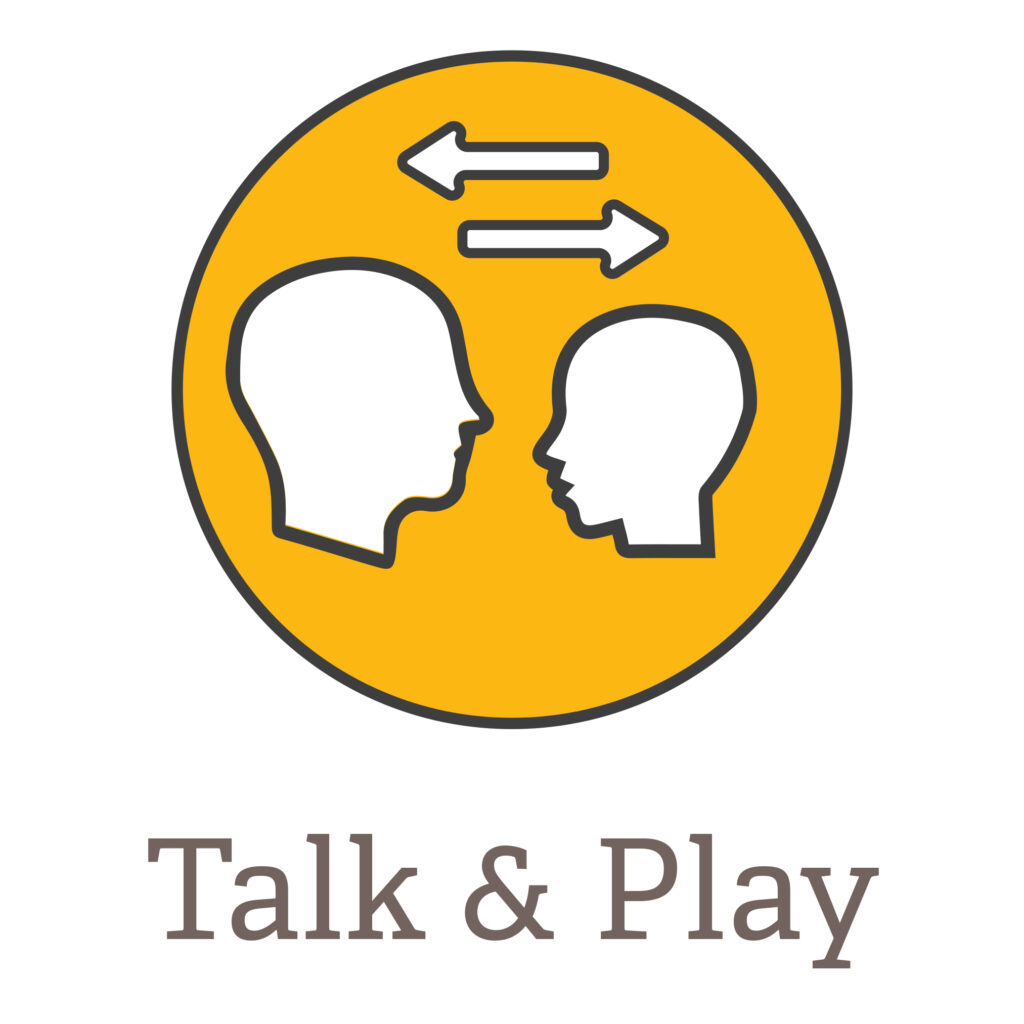
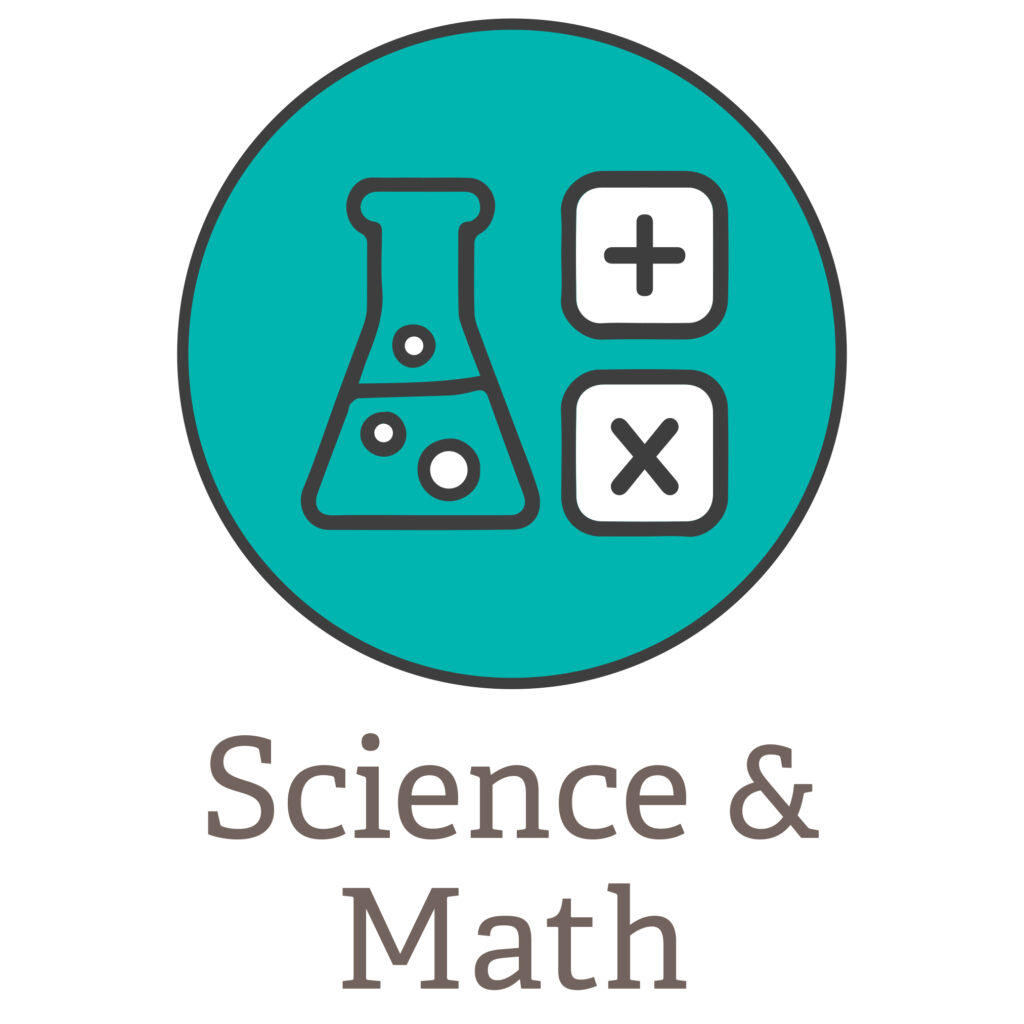

Reimagining School Readiness
Recent research suggests that school readiness “is not a state of knowledge, but a state of mind” (Dr. Dan Gartell, NAEYC). Reimagining School Readiness is based on a comprehensive review of cognitive and developmental psychology by the Bay Area Discovery Museum, The California State Library, and the Pacific Library Partnership made possible in part by the Institute of Museum and Library Services.
Rather than targeting a list of skills, we can focus on helping a child be ready to learn by providing quality adult interactions and experiences, opportunities for science and math learning, and cultivating the social skills and the mindset necessary to excel not only in school but in later life. Children with a growth mindset believe they can improve through hard work, good strategies, and input from others. Also keep in mind that each child develops differently and at their own pace depending on language, culture and prior experiences. “We should think about school readiness as a robust developmental process that spans the early childhood years through age eight” (Bay Area Discovery Museum. Reimagining School Readiness: A Position Paper with Key Findings. Pg 3).
The 6 Key Findings from the study can be grouped in three components: Talk & Play, Math & Science, and Body & Brain. They recommend rethinking the standardized readiness assessments, and change our mindset to focus on the skills and conditions that matter most for a child’s success in school and life.
Talk & Play
- Quality adult-child interactions shape children’s thinking skills. The conversations we have, the questions we ask, and the experiences we provide matter. Simple shifts in our approach and language boost children’s learning and cognitive development.
- Children with stronger social skills do better in school, in the workplace, and in life. Child-directed play is key to the development of social skills and needs to be prioritized in early education.
Science & Math
- Science learning is critical for the development of higher-order thinking but is missing from most early school experiences.
- Demonstrating strong math skills at an early age is a strong indicator of developing conceptual thinking skills and predicts long-term success in school, not just in later math learning but also in later reading proficiency.
Body & Brain
- Planning, self-awareness, and self-control – what psychologists refer to as executive functions – predict positive school and life outcomes. Studies show that children develop executive functions through experience.
- Higher-order thinking, retention of information, and creativity flourish when children experience minimized stress and when their basic needs are met. While persistent stress can impede brain development, caring relationships with adults as well as programs that teach emotion regulation provide protection from risk.
The Reimagining School Readiness Toolkit includes
- Position Paper
- Promising Practices and Case Studies
- Printable bookmarks and flyers focused on each essential skill
- Time to Try math cards
- Printable “Conversation Starters”
- Activity Database
Other things to keep in mind
As mentioned before, the domains of learning and development that support school readiness aren’t universally set or agreed upon. We’ve chosen to expand on the five outlined in Colorado’s Early Learning Guidelines, but there are additional types or categories of information that libraries can address in their early learning events and programs. For instance, PA ForwardⓇ, an initiative conceived by the Pennsylvania Library Association, recommends that libraries address Financial Literacy, Health Literacy, Civic and Social literacy, Basic Literacy, and Information Literacy (digital literacy) in their programming. Your library may be able to partner with a school district, county, state, or regional organization to promote early learning and school readiness to caregivers across a variety of venues, and that may influence the domains or literacies your library includes in programming.
